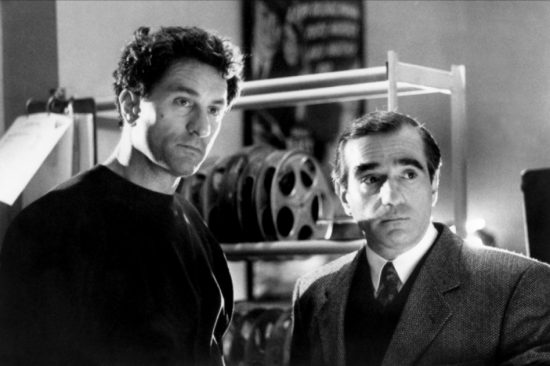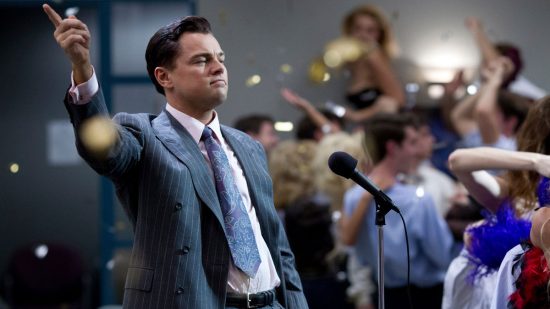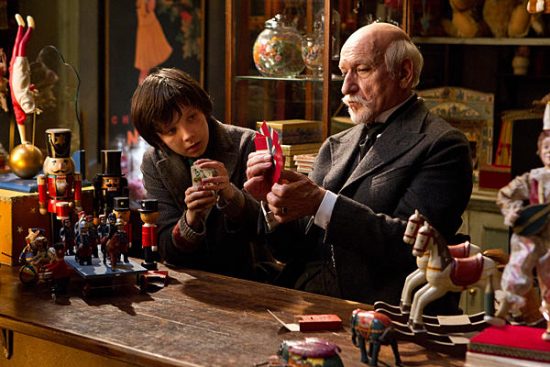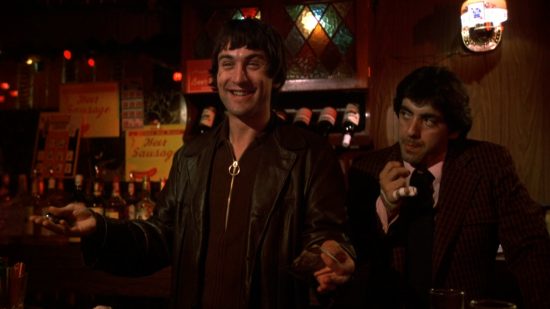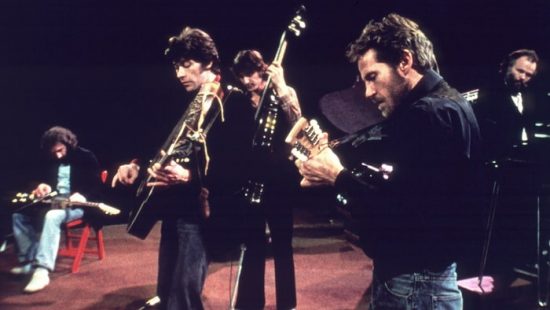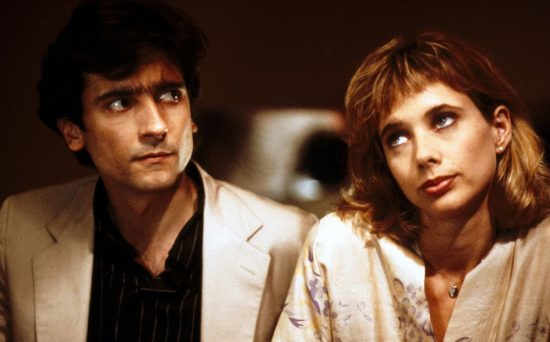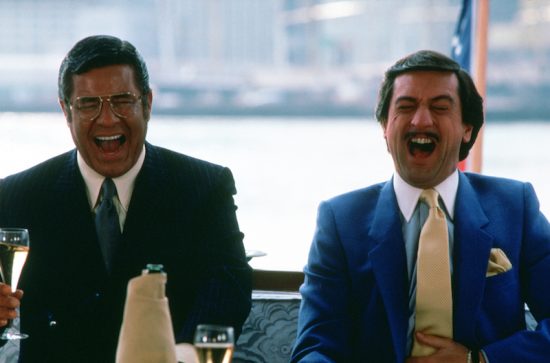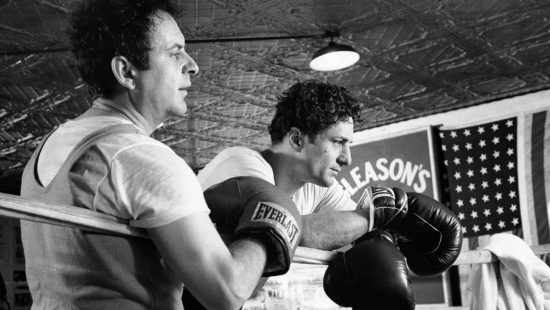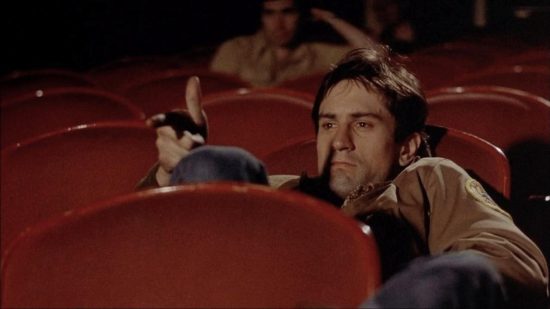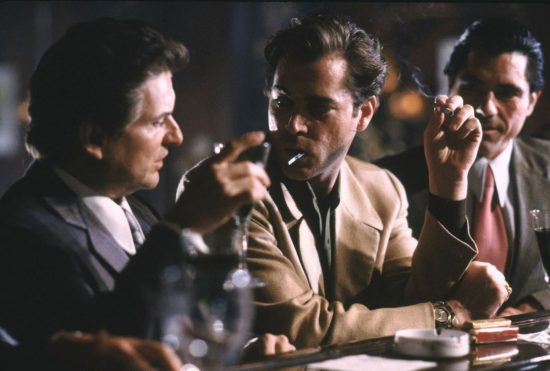Some of the best films by Martin Scorsese
With all that is going on in the world at the moment, there is the opportunity to watch lots of movies. The question is, what do you watch? You can go on a random dive into the films on offer with the various streaming services. Maybe work through your watch list or the unopened Blu-rays on your shelf. Another option is to pick a particular actor or director and work through their back catalogue. John Bleasdale has been taking us on a detailed journey through the films of Steven Spielberg and Stanley Kubrick. However, I thought we could take a quick look a Martin Scorsese and some of his best films
10. The Wolf of Wall Street – 2013
Scorsese’s most recent muse has been Leonardo DiCaprio. Out of the films they have made together it is 2013’s The Wolf of Wall Street. A dark comedy about the life of Jordan Belfort, a stockbroker in New York City. A fast-paced, sprawling tale full of crazy characters and bizarre moments. DiCaprio did wonders in the role. It introduced many of us to Margot Robbie and saw Jonah Hill do one of his great dramatic roles. It is full of so many events that it just gets better with every viewing.
9. Hugo – 2011
A film that at first seems to be a simple tale of an orphan boy trying to fix a mechanical mine takes us on a huge journey into the history of cinema and pays tribute to Georges Méliès. When I heard Scorsese was going to be making a 3D film I did not hold out much hope, but from my first viewing, I was taken away on a beautiful journey that anyone with a passing interest in film should watch. Based on Brian Selznick’s book The Invention of Hugo Cabret, it received 11 Academy Award nominations (including Best Picture), more than any other film that year, and won five awards: Best Cinematography, Best Art Direction, Best Sound Mixing, Best Sound Editing and Best Visual Effects.
8. Casino – 1995
Casino is the gold standard when it comes to gambling films. And while it doesn’t show a great deal of wagering, it does lay bare the day to day running of a mob-era casino empire – from operating a sportsbook to betting percentages and odds. Plus there are lots of roulette wheels and slot machines. Things have changed a lot since then with the internet and gambling online being a huge part of the business. The story follows Ace Rothstein and Nicky Santoro, mobsters who move to Las Vegas to make their mark. Ace is the operator of the Tangiers Casino, while Nicky, his childhood friend, is a tough strong man who shakes down the locals. It had been compared to Goodfellas and did have a few similarities – Both are written by Nicholas Pileggi and both star Robert De Niro as a cunning, criminal figure and Joe Pesci as a mobster prone to violent, uncontrollable rages.
7. Mean Streets – 1973
Although not his first feature (that would be Who’s That Knocking At My Door), Mean Streets was Scorsese’s first feature that he had complete creative control. It was based on real events that Scorsese had seen while growing up in New York City’s Little Italy. This can be seen in everything from the dialogue, the setting, to the mise en scène. It was also the film that played a major part in launching Robert De Niro’s film career and featured a brilliant performance by Harvey Keitel.
6. The Last Waltz – 1978
On November 25, 1976, at Winterland Ballroom in San Francisco, The Band got together for their “farewell concert appearance.” They were joined by Bob Dylan, Paul Butterfield, Neil Young, Emmylou Harris, Ringo Starr, Ronnie Hawkins, Dr. John, Joni Mitchell, Van Morrison, Muddy Waters, Ronnie Wood, Neil Diamond, Bobby Charles, The Staple Singers, and Eric Clapton. Scorsese was there with a huge film crew and seven 35mm cameras to record the whole thing. He then spent a year editing the footage to bring us one of the greatest concert films of all time. Robbie Robertson got Martin Scorsese to direct based on his use of music in Mean Streets. The cameras were operated by several cinematographers, including Michael Chapman (Raging Bull), Vilmos Zsigmond (Close Encounters of the Third Kind), and László Kovács (Easy Rider, Five Easy Pieces). The stage and lighting were designed by Boris Leven, who had been the production designer on such musical films as West Side Story and The Sound of Music.
5. After Hours – 1985
Because The King of Comedy flopped, Scorsese couldn’t get funding to make The Last Temptation of Christ (although that was given the go ahead in 1988) so he ended up directing After Hours. Originally set to be directed by Tim Burton, the films stars Griffin Dunne who ends up having a very strange night. It is a wonderfully odd comedy that showed a different side to Scorsese. British director Michael Powell (A Matter of Life and Death) took part in the production process of the film and suggested the ending for the film.
4. The King of Comedy – 1982
As the years have rolled by, The King of Comedy seems more and more relevant. Dealing with themes of celebrity worship and the way media can be manipulated it stars Robert De Niro, Jerry Lewis and Sandra Bernhard. Scorsese said he felt Lewis’ performance in the film was vastly underrated and deserved more acclaim. Scorsese decided to film it based on early silent films. It had more static camera shots and fewer close-ups. De Niro met and spoke to one of his own stalkers to get a better idea on how to play Rupert Pupkin. Although the film was well received by critics, it bombed at the box office, but over the years its reputation has improved.
3. Raging Bull- 1980
The life of Jake LaMotta, an Italian American middleweight boxer, was brought to life in striking fashion by Robert De Niro. It has some of the best boxing scenes in film and Scorsese, who was not a boxing fan, managed to turn a story full of cliche – a fighter who has trouble with the mob and his own family – into something truly remarkable. Preparation for the film began with Scorsese shooting some 8mm colour footage featuring De Niro boxing in a ring. One night when the footage was being shown to De Niro, Michael Chapman, and his friend and mentor, the British director Michael Powell, Powell pointed out that the colour of the gloves at the time would have only been maroon, oxblood, or even black. Scorsese decided to use this as one of the reasons to film Raging Bull in black and white. The film also featured breakout roles by Cathy Moriarty and Joe Pesci.
2. Taxi Driver- 1976
Starring Robert De Niro, Jodie Foster, Harvey Keitel, Cybill Shepherd, Peter Boyle, and Albert Brooks, the film won the Palme d’Or at the 1976 Cannes Film Festival. To prepare for the film De Niro obtained a cab driver’s license and would pick up a cab and drive around New York for a couple of weeks. Michael Chapman’s cinematography and Bernard Herrmann’s score add to the constant dread that permeates the film as we follow Travis Bickle (De Niro), a a 26-year-old honourably discharged U.S. Marine, who drives around New York City in his taxi and is disgusted with the sleaze he sees in the city.
1. Goodfellas – 1990
“As far back as I can remember, I always wanted to be a gangster.” With those words, Scorsese took us on a wild trip through the life of mobster Henry Hill (Ray Liotta). The film just pulls along with it and it is such a joy to watch. It also features one of the greatest food scenes in film (which I spoke about in a podcast episode). Every scene is amazing, every line is quotable and every performance is remarkable. Truly one of the greatest films of all time.
They’re my top 10 Scorsese films, but which ones would be on your list? Share your thoughts in the comments below.

